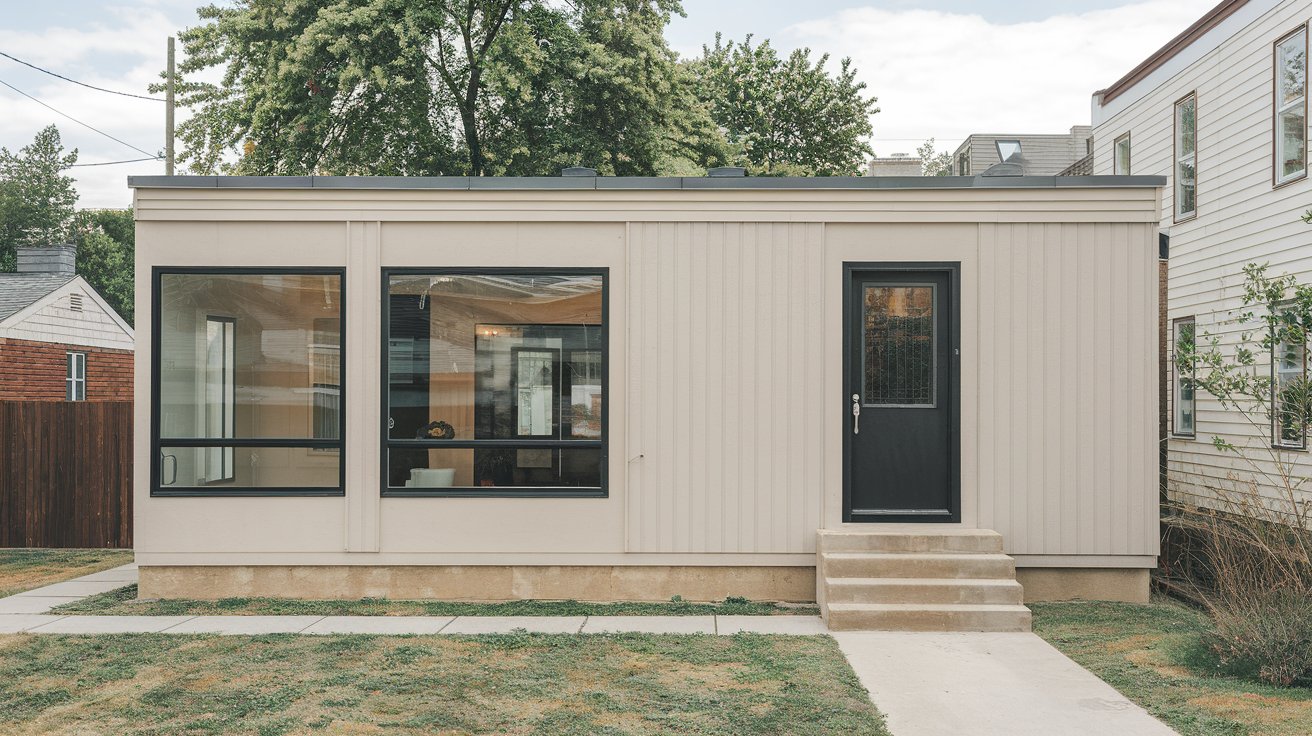I used to think every house needed gutters. Then I moved to a home without them and panicked. Would my foundation crack? Would water damage ruin everything?
Turns out, I wasn’t alone in this worry. Many homeowners face the same question when they buy a house with no gutters or consider removing existing ones.
Whether your home needs gutters depends on a variety of factors, from climate to roof design. The key is knowing which category your home falls into and what alternatives exist.
I’ve spent months researching this topic, talking to contractors, and learning from real homeowner experiences. Let me share what I found about living with no gutters on your house.
Why Some Houses Don’t Have Gutters?
Many builders skip gutters during construction for specific reasons. It’s not an oversight – it’s a deliberate choice based on cost and design preferences.
Builders often eliminate gutters to save $800-2000 per home during construction. This reduces both material costs and labor time. Fewer contractors need coordination, and the building process moves faster without gutter installation delays.
Architectural Style Requirements:
- Modern minimalist homes prioritize clean roof lines
- Mediterranean and Southwest styles traditionally exclude gutters
- Historic reproductions maintain authentic period looks
Some developers build entire neighborhoods without gutters to keep prices competitive. They pass the decision to homeowners who can add them later if needed.
Certain building codes don’t require gutters, giving builders flexibility. In these areas, gutters become an optional upgrade rather than a standard feature. The choice often comes down to immediate savings versus long-term water management needs.
When Can a House Go Without Gutters?
Your house can skip gutters when specific conditions work in your favor. These situations create natural water management that replaces traditional gutter systems.
Key Qualifying Conditions:
- Annual rainfall under 20 inches per year
- Roof overhangs extending 18+ inches from walls
- Well-draining soil that absorbs water quickly
Homes on sloped lots handle water runoff naturally. The grade carries rainwater away from your foundation without pooling. This works best when the slope drops at least 6 inches over 10 feet from your house.
Your roof pitch matters too. Steep roofs with angles above 6:12 throw water several feet away from your foundation. Combined with proper lot grading, this creates effective water diversion.
Properties surrounded by established landscaping often don’t need gutters. Mature trees and shrubs absorb excess moisture while their root systems help the soil drain faster. This natural system handles moderate rainfall effectively.
The size of your roof also plays a role. Smaller roofs collect less water, reducing the volume that needs management around your foundation.
Potential Risks of Not Having Gutters
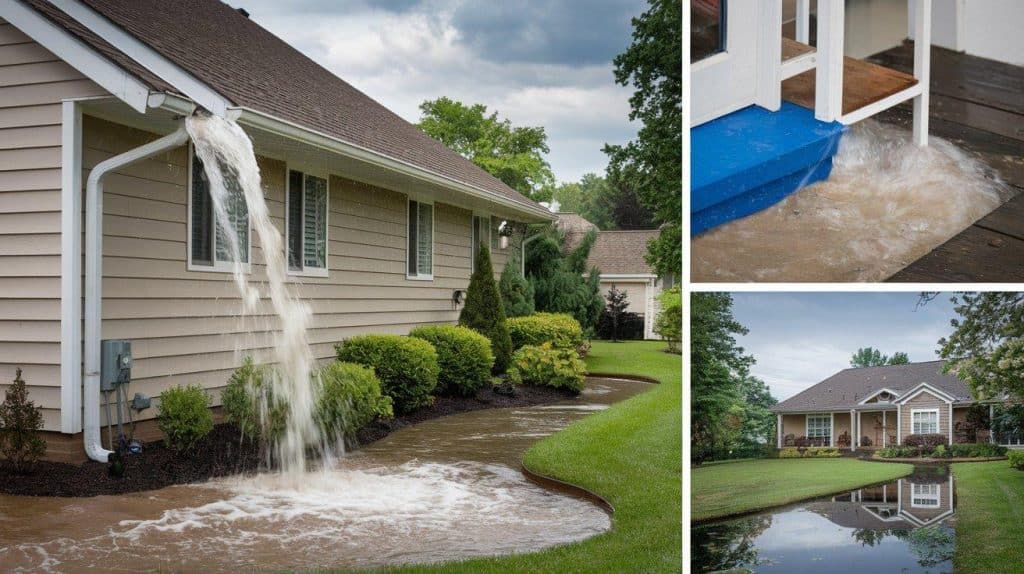
Skipping gutters isn’t always problem-free. Water damage can sneak up on you, and repair costs often exceed what gutters would have cost initially.
1. Foundation Damage
Water pools around your foundation during heavy rains. This causes soil expansion and contraction that creates cracks. Over time, these cracks allow water into basements and crawl spaces. Foundation repairs typically cost $3,000-15,000 compared to $1,500 for gutters.
2. Landscaping Erosion
Roof runoff creates channels in your yard and flower beds. Plants get washed away during storms. Mulch and topsoil end up in unwanted areas. You’ll spend extra money each year replacing eroded landscaping materials.
3. Exterior Wall Staining
Water splashes back from the ground onto your siding. This creates permanent stains and discoloration. Paint peels faster when constantly exposed to moisture. Siding replacement costs significantly more than gutter installation.
4. Basement Flooding
Without proper water diversion, excess moisture finds ways inside. Heavy rainfall may lead to basement moisture or flooding, an early sign that drainage needs attention. Mold growth becomes a serious health concern.
Signs Your Home Needs Gutters
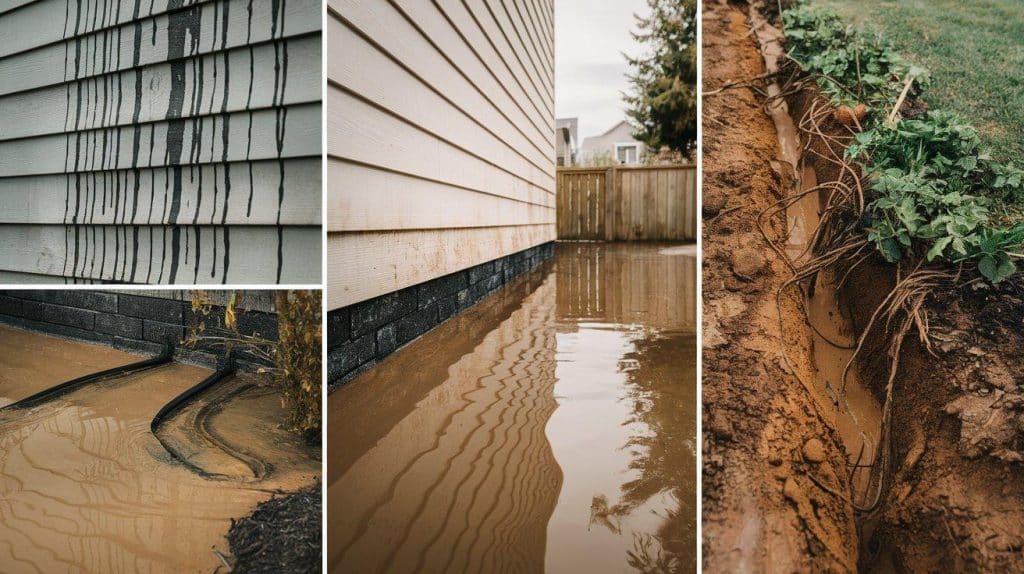
Watch for these warning signals that indicate your home requires proper water management. Catching these early prevents expensive repairs later.
- Water Stains on Siding: Dark streaks or discoloration on your exterior walls mean water is splashing back from the ground. This constant moisture damages paint and siding materials over time.
- Foundation Warning Signs: Watch for standing water near your home’s base after rainfall. Persistent pooling can weaken your foundation, cause cracks, and lead to basement leaks over time.
- Yard and Garden Erosion: If you notice grooves in the soil or displaced mulch and plants after rain, your roof runoff may be eroding the landscape and calling for better water management.
- Basement Moisture Red Flags: Musty smells, water seepage, or dampness in your basement signal poor drainage. These are often preventable with proper water diversion methods.
- Peeling Paint or Rotting Wood: Exterior trim that’s constantly wet will show damage quickly. Look for soft spots, paint bubbles, or wood that feels spongy to touch.
- Ice Dams in Winter: Thick ice buildup along roof edges indicates water isn’t flowing away properly. This can damage both your roof and foundation areas.
Gutter Alternatives to Consider
You don’t have to choose between gutters and no protection at all. Several alternatives handle water management effectively while offering unique benefits.
1. Rain Chains: Decorative and Functional
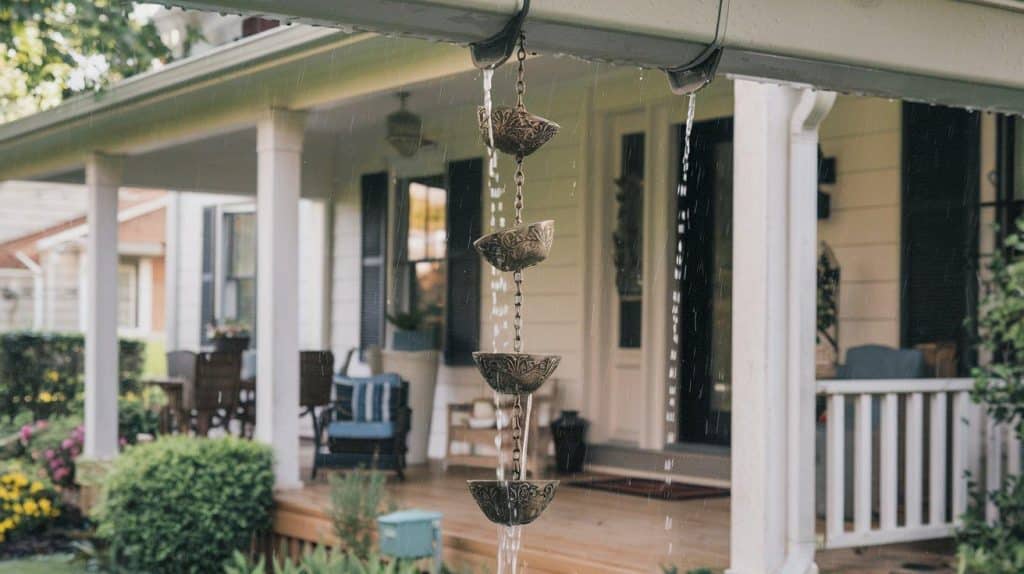
Rain chains guide water from the roof to the ground in a controlled, attractive flow. These metal chains cost $30-150 each and install where downspouts normally go. They work best in moderate rainfall areas and add visual interest to your home’s exterior.
Key Benefit: Combines function with visual appeal for moderate climates.
2. Drip Edges with Gravel Systems
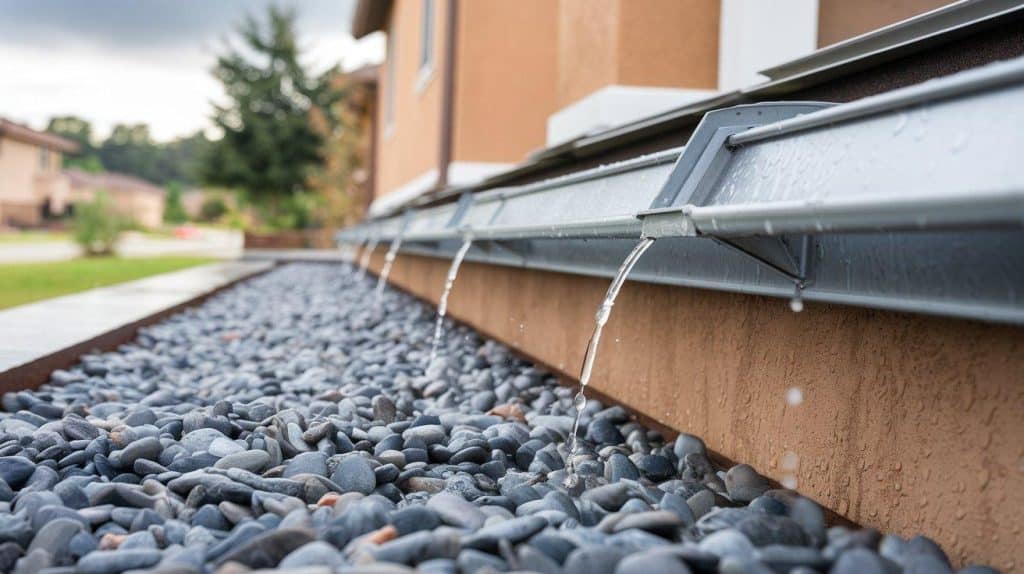
Metal drip edges attach to roof lines and direct water outward. Pair them with gravel trenches below to catch and absorb runoff. This combination costs $200-500 for average homes and requires minimal upkeep over decades.
Key Benefit: Low-cost solution with virtually no maintenance requirements.
3. French Drains and Strategic Landscaping
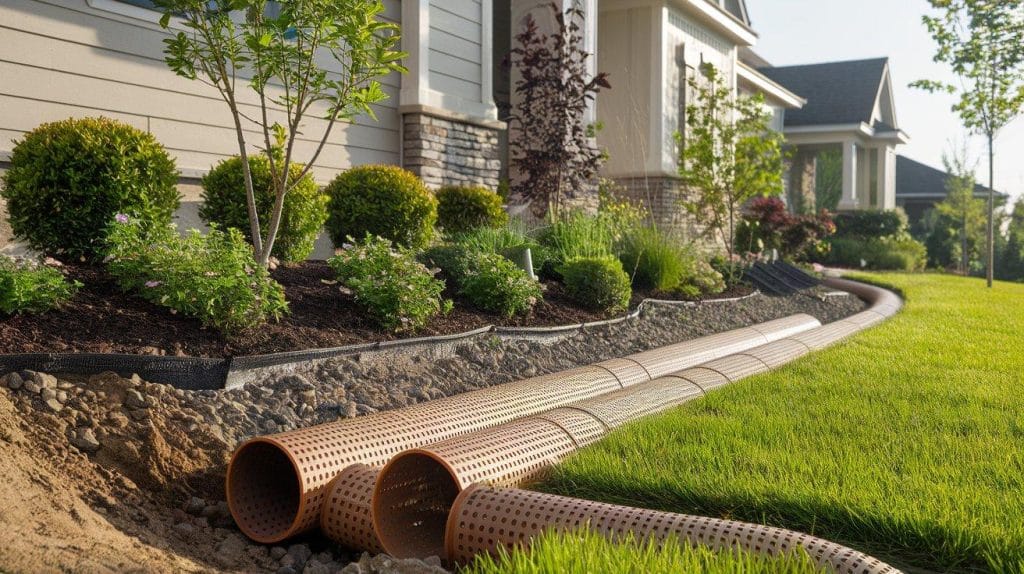
Underground perforated pipes collect and redirect water away from foundations. Strategic plantings absorb excess moisture while improving your yard’s appearance. Professional installation runs $1,000-3,000, but handles heavy rainfall effectively.
Key Benefit: Handles heavy water flow while enhancing property appearance.
4. Ground Grading for Water Diversion
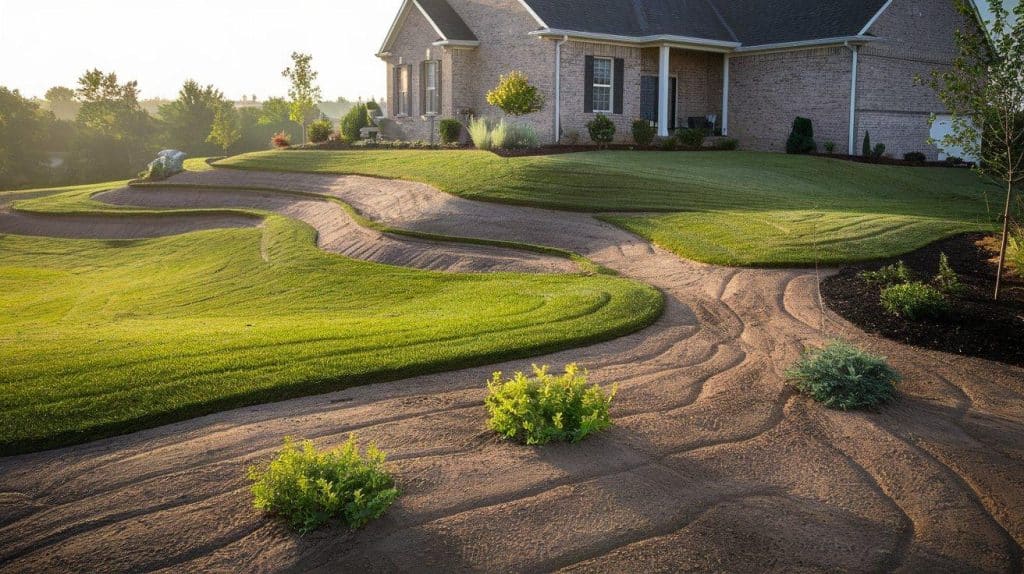
Reshape your yard to create natural water flow patterns away from the house. This involves adding soil in some areas and removing it in others. Costs vary by lot size but typically range from $500-2,000 for professional grading work.
Key Benefit: Permanent solution requiring zero ongoing maintenance.
Cost Comparison: Gutters vs. Alternatives
Understanding the financial differences helps you make the right choice for your budget and home needs.
| Option | Initial Cost | Maintenance | Lifespan | Best For |
|---|---|---|---|---|
| Traditional Gutters | $1,200-2,500 | $200-400/year | 15-20 years | Most homes |
| Rain Chains | $100-600 | Minimal | 20+ years | Light rainfall areas |
| Drip Edges + Gravel | $200-500 | Very low | 25+ years | Moderate water flow |
| French Drains | $1,000-3,000 | Low | 30+ years | Heavy rainfall zones |
| Ground Grading | $500-2,000 | None | Permanent | Sloped properties |
Long-Term Value Analysis
Gutters provide the most predictable costs over time. Alternatives work well in specific situations but may require adjustments if your climate changes.
French drains offer the best long-term value despite higher upfront costs. Ground grading provides permanent solutions for suitable properties. Rain chains work well as decorative options in dry climates.
Initial savings shouldn’t outweigh long-term water protection. Consider your local weather patterns and soil conditions when making decisions.
Maintenance Tips for Homes Without Gutters
Homes without gutters need different care to prevent water damage. These simple steps protect your property year-round.
- Check Foundation Regularly: Walk around your house after heavy rains to spot pooling water or new cracks.
- Maintain Proper Yard Grading: Keep soil sloped away from your foundation at least 6 inches over 10 feet.
- Clean Roof Regularly: Remove leaves and debris that can block natural water flow off your roof.
- Inspect Exterior Walls Monthly: Look for water stains, peeling paint, or soft spots that indicate moisture problems.
- Keep Downspout Areas Clear: Even without gutters, maintain clear paths where roof water naturally falls.
- Monitor Basement for Moisture: Check for dampness, musty smells, or water seepage during rainy seasons.
- Trim Overhanging Branches: Remove tree limbs that could direct extra water onto your roof or walls.
Conclusion
Whether your home needs gutters depends on how it handles water naturally. Your specific situation matters most; climate, soil drainage, roof design, and yard grading all determine success or failure.
Dry climates with well-draining soil often skip gutters without problems. Wet regions with heavy rainfall need water management to protect against structural damage from unmanaged runoff.
Alternatives like French drains and rain chains work well in many cases. They cost less than traditional gutters while needing minimal maintenance.
Before deciding, watch how water moves around your property during storms. This shows more than general advice could.
Every house has unique needs, so avoid generic solutions when protecting your investment.
What’s your experience with gutters? Share your thoughts in the comments below and help other homeowners make informed decisions.
Frequently Asked Questions
How Do You Collect Rainwater from A Roof without Gutters?
Use tarps positioned at roof edges to catch and direct water into collection containers. This flexible, budget-friendly method works well for temporary rainwater harvesting needs.
How Do You Redirect Rainwater from A Roof?
You can use decorative rain chains, discussed earlier, to guide water flow without traditional gutters. They create attractive water features while effectively directing flow away from your foundation.
Do You Really Need Gutters on Your Home?
Not always. Homes in dry climates or with proper drainage often function fine without gutters. However, areas with heavy rainfall typically require a water management system.

